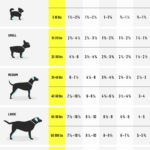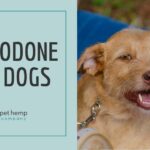Can A Dog Eat Mac And Cheese
Can a Dog Eat Mac and Cheese? Exploring the Risks and Benefits of Sharing Human Food with Your Canine Companion
Dogs are known for their love of food, especially when it comes to treats and table scraps. Many dog owners enjoy sharing their meals with their furry friends, either as a reward or as a way to bond. However, not all human foods are safe or healthy for dogs to eat. In fact, some foods can be toxic or cause digestive problems for dogs. One popular dish that often raises questions among dog owners is mac and cheese. So, can a dog eat mac and cheese? The answer is not straightforward, as it depends on several factors.
What is Mac and Cheese?
Mac and cheese is a classic comfort food that consists of cooked macaroni noodles mixed with cheese sauce. The cheese sauce can be made from various types of cheese, milk, butter, flour, and spices. Some recipes also add bacon bits, breadcrumbs, or vegetables to enhance the flavor and texture. Mac and cheese can be served as a side dish or as a main course, depending on the portion size and the accompaniments.
Is Mac and Cheese Safe for Dogs?
The short answer is no. Mac and cheese is not an ideal food for dogs to eat because it contains several ingredients that can harm them or upset their stomachs. Here are some reasons why:
– Cheese: While dogs can tolerate small amounts of plain cheese as a treat or training aid, too much cheese can cause diarrhea, vomiting, or pancreatitis (inflammation of the pancreas). This is because cheese contains lactose (milk sugar) which many dogs are intolerant to due to lack of lactase enzyme in their digestive system.
– Pasta: Cooked pasta itself is not toxic to dogs but it has little nutritional value for them. Additionally, pasta contains gluten which can trigger allergies or sensitivities in some dogs, and can also contribute to weight gain or digestive issues if consumed in excess.
– Milk and Butter: The dairy products used in mac and cheese can cause digestive upset in dogs, especially if they are lactose intolerant. Butter is high in fat and calories, which can lead to obesity or pancreatitis in dogs if consumed regularly or in large amounts.
– Spices and Additives: Many mac and cheese recipes contain spices like garlic, onion, pepper, or paprika that can be toxic to dogs. These spices can damage their red blood cells, leading to anemia or organ failure. Additionally, some recipes add breadcrumbs, bacon bits, or other toppings that may contain salt or sugar, which can be harmful to dogs.
What Are the Risks of Feeding Mac and Cheese to Dogs?
If a dog eats a small amount of mac and cheese by accident or as a treat, it may not cause any immediate harm. However, if a dog consumes a significant portion of mac and cheese regularly or as part of their diet, it could lead to various health problems over time. Here are some potential risks of feeding mac and cheese to dogs:
– Nutritional Imbalance: Mac and cheese is not a balanced meal for dogs because it lacks essential nutrients such as protein, vitamins, minerals, fiber, and omega-3 fatty acids. If a dog eats too much mac and cheese instead of their regular dog food, they may develop malnutrition or deficiencies that can affect their growth, immunity, skin/coat health, and overall well-being.
– Obesity: Mac and cheese is high in calories, fat, and carbohydrates which can cause dogs to gain weight quickly if they eat too much. Obesity is a major health issue for dogs as it increases the risk of numerous diseases such as diabetes, arthritis, heart disease, cancer, respiratory problems, and shortened lifespan.
– Digestive Problems: Mac and cheese can be difficult for dogs to digest due to its high fat and lactose content. Dogs that eat too much mac and cheese may experience diarrhea, vomiting, flatulence, stomach pain, or constipation. These symptoms can be uncomfortable and distressing for dogs, and may require veterinary care if they persist or worsen.
– Food Allergies or Intolerances: Some dogs are allergic or sensitive to ingredients commonly found in mac and cheese such as wheat, gluten, dairy, and soy. If a dog eats mac and cheese that contains these allergens, they may develop symptoms like itching, redness, swelling, rashes, hives, ear infections, or respiratory issues. In severe cases, anaphylaxis (a life-threatening reaction) may occur.
What Are the Alternatives to Feeding Mac and Cheese to Dogs?
If you want to share some food with your dog but don’t know what is safe or healthy for them to eat, here are some alternatives that you can consider:
– Commercial Dog Treats: Many pet stores sell treats specifically made for dogs that are tasty and nutritious. You can choose from a variety of flavors and textures that suit your dog’s preferences and dietary needs. However, make sure to read the label carefully and avoid treats that contain artificial preservatives, colors, flavors, or fillers.
– Fruits and Vegetables: Most fruits and vegetables are safe for dogs to eat in moderation as they provide vitamins, fiber, antioxidants, and hydration. Some popular options include apple slices (without seeds), blueberries, bananas (in small chunks), carrots (cooked or raw), green beans (steamed), pumpkin puree (unsweetened), sweet potato (baked), and zucchini (grated). However, avoid giving your dog grapes/raisins, onions/garlic/chives/leeks/shallots/scallions/mushrooms/avocado/potato leaves or stems, as they can be toxic to dogs.
– Meat and Fish: Lean meats and fish are excellent sources of protein, omega-3 fatty acids, and amino acids that support muscle development and organ function in dogs. Some suitable options include chicken (cooked without bones or skin), turkey (cooked without bones or skin), salmon (cooked and deboned), tuna (in water), and sardines (canned in water). However, avoid giving your dog raw or spoiled meat/fish, processed meats with additives/preservatives, or fatty cuts/gravy/sauces.
– Homemade Dog Food: If you want to make your own dog food at home, you can consult a veterinary nutritionist to ensure that the recipe is balanced and meets your dog’s nutritional needs. Homemade dog food should contain a source of protein (e.g., meat, eggs, dairy), carbohydrates (e.g., rice, quinoa, oats), vegetables/fruits (e.g., spinach, kale, broccoli, blueberries), and supplements (e.g., calcium, vitamins, minerals) in the right proportions. However, avoid using ingredients that are harmful to dogs or that may cause allergies/intolerances.
Conclusion
In summary, can a dog eat mac and cheese? While it is technically possible for a dog to eat mac and cheese without immediate harm, it is not recommended due to its high fat content, lactose content, gluten content, spice content, and lack of essential nutrients. Feeding mac and cheese regularly or in large amounts can lead to various health problems such as malnutrition, obesity, digestive upset, food allergies/intolerances. Therefore, it’s best to avoid sharing human food with your dog unless you have consulted with a veterinarian or nutritionist. By choosing safe and healthy alternatives for your canine companion’s diet , you can show them love and care while ensuring their long-term health and happiness.



